14 Instruments Used in Country Music
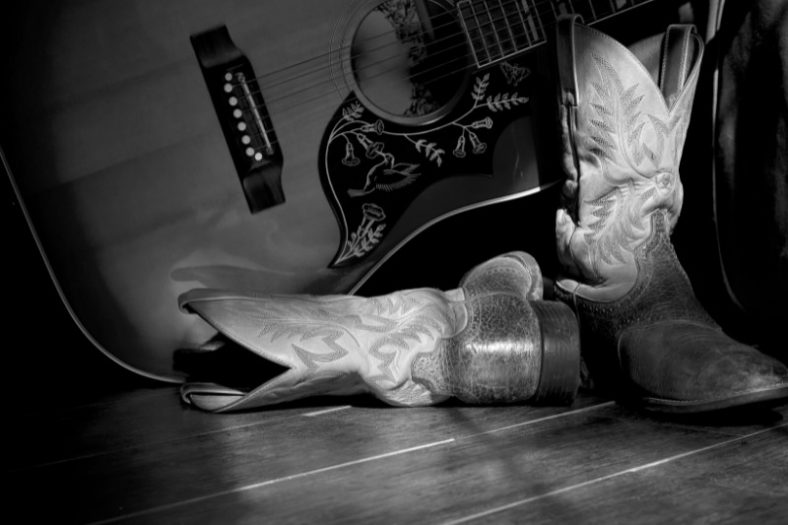
There are plenty of different types of instruments played across the diverse genre of country music. Here are 14 of the most common ones.
Of course, some will be used more commonly in some ‘sub-genres’ of country (see our section on Traditional Country vs Modern Country Music later on in the article for more information).
Contents
Country Music Instruments
1. Banjo

The banjo is a plucked string instrument of the lute family and was one of the main instruments used in traditional country music. Although the origins of the banjo and the etymology of the word are uncertain, African-Americans played and created the early form of the instrument in the US.
Consisting of four or five strings, its resonator is a typically circular membrane stretched over a frame or cavity. This membrane is made usually of plastic and sometimes of animal skin. It increases the resonance of the sound in the same way that the soundbox and sounding board of an acoustic guitar do.
2. Fiddle

The fiddle is essentially the same instrument like the violin – the smallest member of the violin family. This bowed string instrument is known by different names in the contexts of different genres. In the context of classical music, for example, it would be called a violin, whereas, in the context of country or bluegrass, it would be called a fiddle.
In fiddle music, the rhythms are fast and peppy and meant for dancing. The notes change quickly according to the rhythms, and sustained notes are rare.
Being small and portable, the fiddle was an obvious choice of instrument for immigrants traveling from the British Isles. The fiddle music of Scotland became an iconic symbol of Appalachian culture and as the banjo, the fiddle was one of the main instruments of traditional country music.
3. Harmonica
The harmonica is what is known as a free-reed wind instrument. There are different types of harmonicas depending on the keys they can play, but the basic structure consists of a mouthpiece with holes along its length.
Players blow air into these holes or suck the air out of them, to produce notes. You may know the harmonica by other names, such as the mouth organ or French harp.
The harmonica was invented in the 19th century in Europe and was brought to America soon after. It was small enough to fit in the palm and could be easily slipped into a pocket. The people moving west found it a convenient instrument to take along, which is why the harmonica is often featured in western music.
4. Mandolin
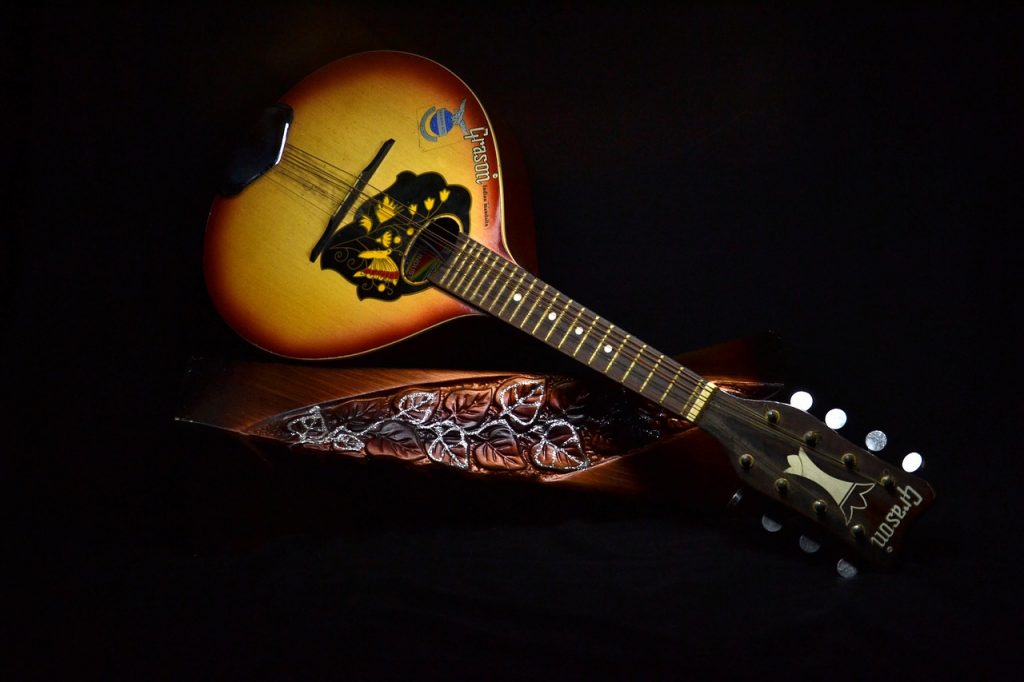
The mandolin is another addition to the lute family. It typically has four pairs of metal strings that are tuned in unison, and they are generally plucked with a plectrum.
The mandolin was useful in creating atmosphere by alternately plucking the strings of a pair. Two strings played this way gave a much stronger and more continuous sound than plucking a single string.
5. Dobro
Dobro is a type of resonator guitar with a single cone.
A resonator guitar is different from an acoustic guitar in that it produces sound by conducting string vibrations through the bridge to spun metal cones called resonators, instead of to the top of the guitar or sounding board. Unlike the conventional guitar, it is most often played placed across the player’s lap.
Originally designed to be louder than an acoustic guitar – to make it audible over other instruments, the dobro came to be prized for its unique tone.
6. Acoustic Guitar
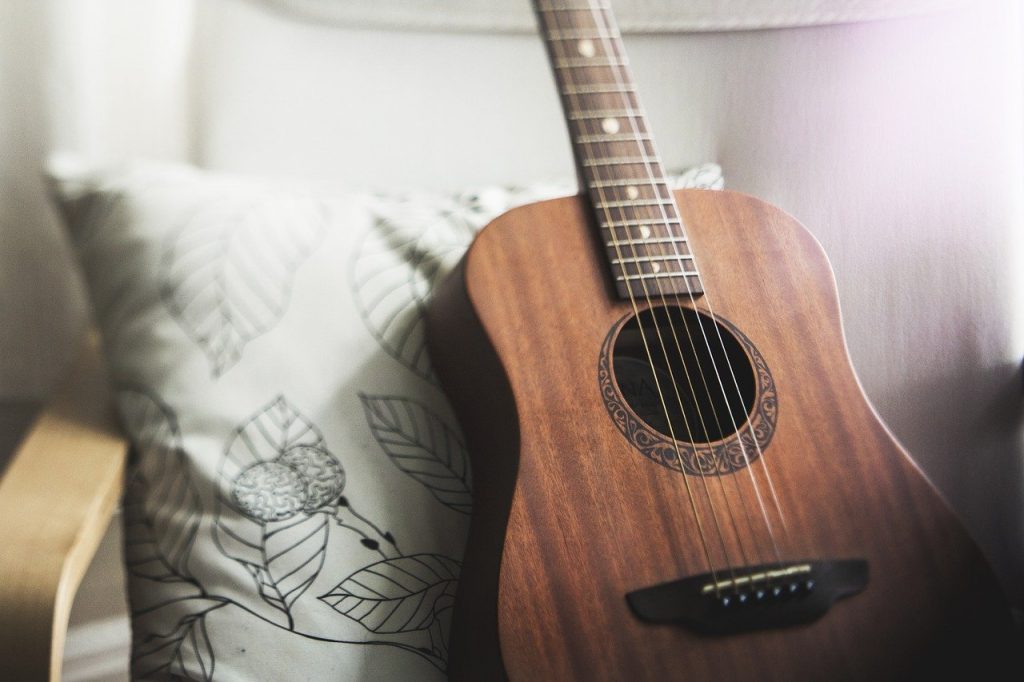
The acoustic guitar is perhaps one of the most popular and widely used plucked string instruments. Likely to have originated in Spain in the early 16th century, acoustic guitars are extremely varied in their design and construction.
When a string is plucked, its vibrations travel from the bridge to the top and body of the guitar, and sound is produced from the soundhole.
Acoustic guitars, known for their rich, warm tones, have been extensively used in both modern and traditional country music.
7. Accordion
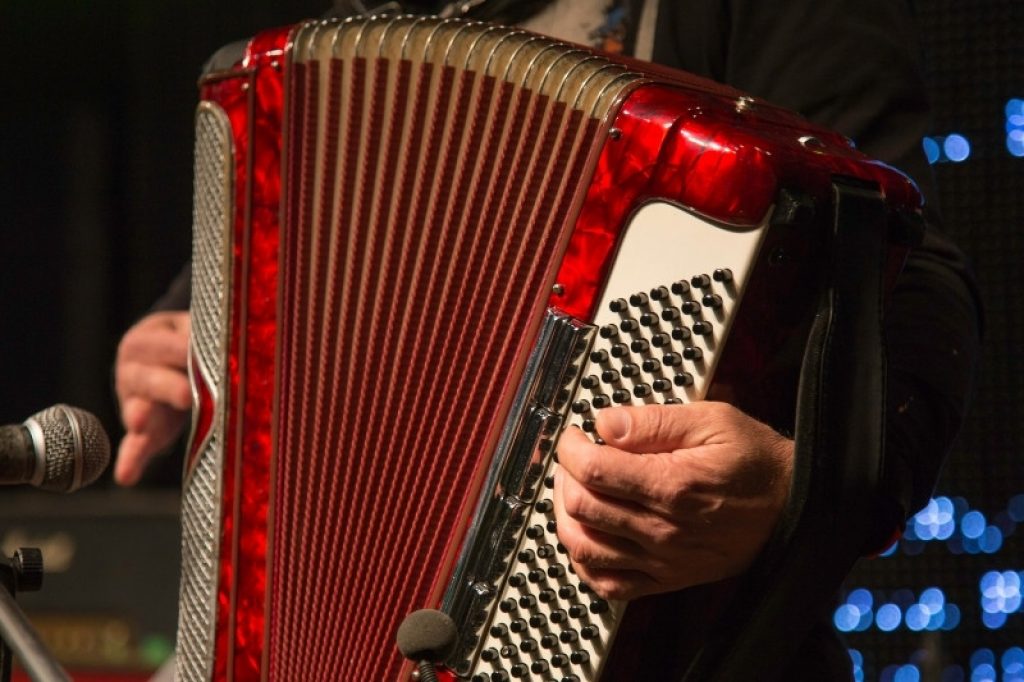
Accordions are a family of free-reed instruments that are also known as squeezeboxes. They are portable, and accordionists strap them across the torso while playing. The player presses keys or buttons with one hand, and expands and contracts bellows with the other.
A piano accordion is an accordion that has a right-hand keyboard like that of a piano or organ and is the most commonly seen type of accordion.
The accordion originated in Europe in the 19th century and spread to the Americas through European immigrants. Piano accordions and diatonic button accordions were used primarily in western music.
8. Upright Bass
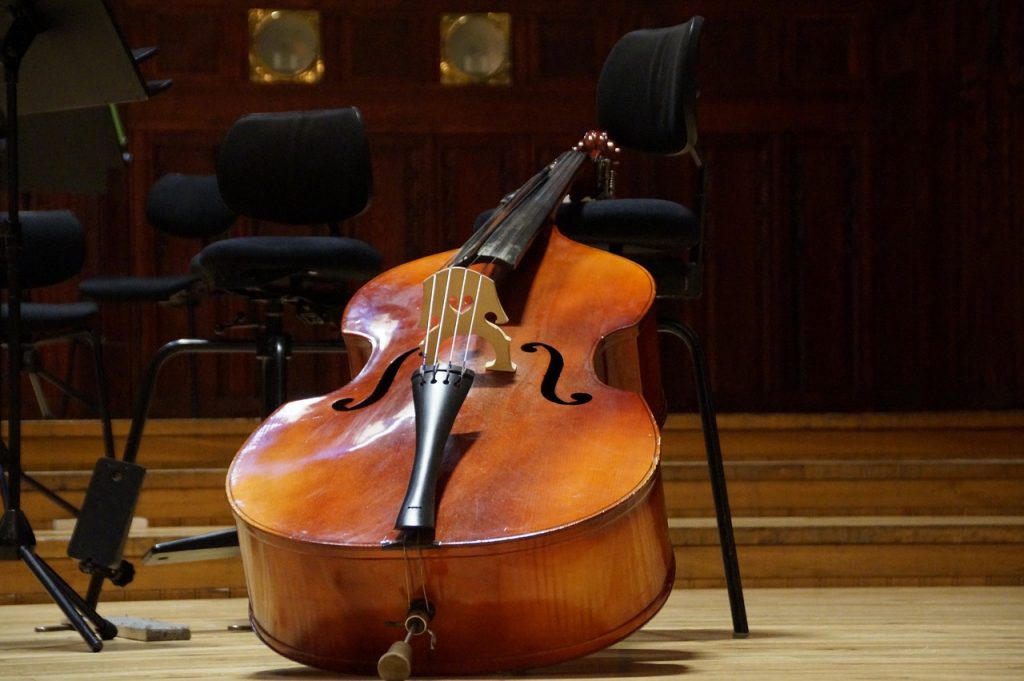
The upright bass, or double bass, is a bowed string instrument that produces low-frequency notes. In folk music, it is also referred to as a bass fiddle or a bass violin. Similar in structure to the cello, it typically has four strings, and the player either sits or stands to play it.
The upright bass featured extensively in the rockabilly sub-genre of country music. However, plucking the strings – or pizzicato – was the norm in rockabilly, as opposed to playing it with a bow.
9. Electric Guitar
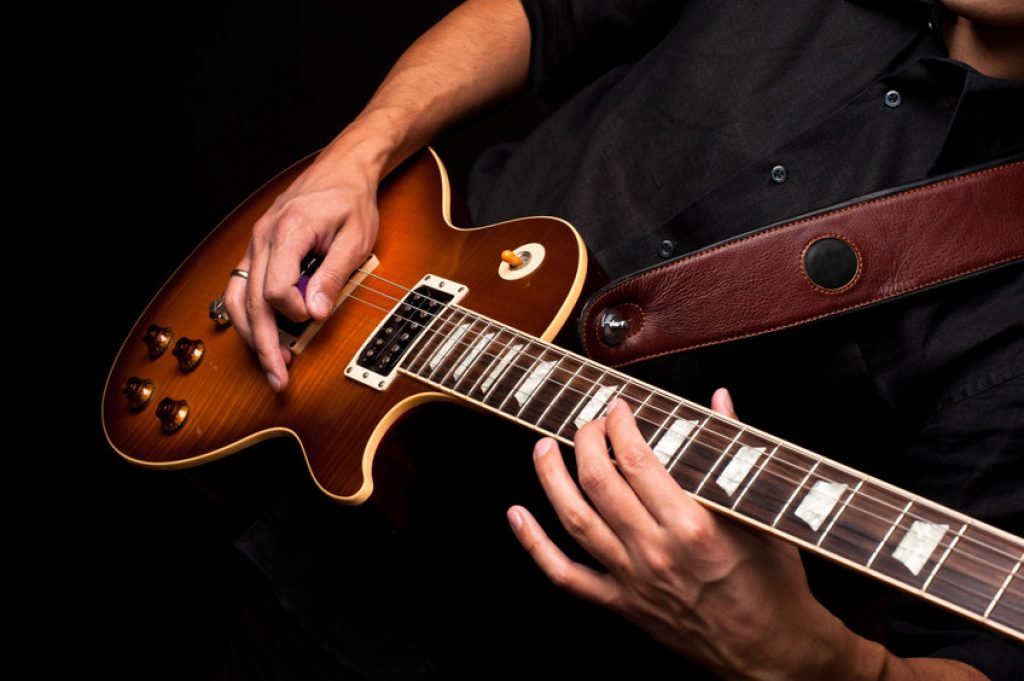
Like the acoustic guitar, the electric guitar is a popular instrument and is widely used in multiple genres. The electric guitar has a solid body and no soundbox. It uses magnetic or piezoelectric pickups that convert vibrations of the string into electrical signals. These electrical signals are then passed on to a guitar amplifier which converts them back to sound.
Apart from the amplified volume, a major benefit of the electric guitar is that the player can control the output and create a fitting tone for any style or song. Distortion and reverb, among other parameters, can be adjusted freely.
Country musicians started using electric guitars in the late 30s. Licks and riffs gained importance with the emergence of the Nashville sound in the 50s, and the electric guitar was the perfect instrument to play them.
10. Electric Bass

The electric bass is an instrument of the guitar family used to play bass notes. Like the upright bass, it typically has four strings, although five and six-string versions are also used.
It works exactly like the electric guitar, and apart from a significantly longer neck, it is constructed the same way as well.
11. Drums

Drums were initially considered ‘too loud’ and ‘not pure’ for country music. Bob Wills – known widely as the King of Western Swing – had added drums to his band by 1935.
Drums were so looked down upon that conservative country music shows preferred to keep the drummers backstage even in the mid-50s. However, within a few years, it became uncommon to see a country band without a drummer.
12. Piano
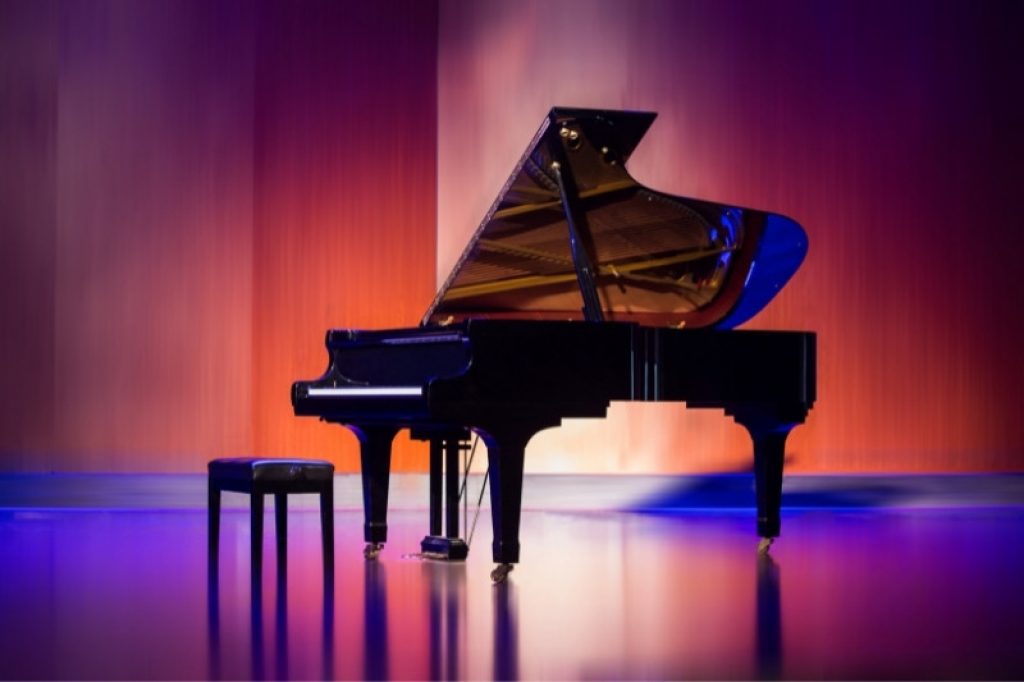
Although initially disliked by country musicians and producers, the piano became important in the country music scene with the emergence of western swing. Born out of a fusion of country music and jazz, western swing prominently featured pianists in records and performances.
A strain of piano music that made its way into country music in the 30s and 40s was the Honky-Tonk style, which emphasized rhythm over melody.
13. Autoharp
The autoharp is a plucked string instrument of the zither family. It uses bars that damp the strings that are not a part of the chord being played.
One hand strums the strings, while the other controls the bar. Although the autoharp is not as commonly used in country music today, it has been a major instrument of Appalachian music.
14. Pedal Steel Guitar
The pedal steel guitar is a type of steel guitar that has a structure similar to a small table. Pedals and levers are used to raise, lower, or bend, the pitches of the strings. These mimic the mechanism that a guitarist uses to bend strings with fingers and shift the pitch by changing string tension.
Steel guitars should not be confused with steel-stringed acoustic guitars. A steel guitar is usually fretless and is played by moving a steel bar over the strings. It is particularly useful for sliding or producing continuous pitches.
Formed in the Hawaiian islands, the steel guitar entered country music due to a meeting between country musician Jimmie Tarlton and Hawaiian guitarist Frank Ferera.
Traditional Country Vs Modern Country Music
Country music, short for ‘Country and Western,’ is a popular musical genre that has its roots in the folk songs of 18th century working-class Americans. This style developed through the fusion of various cultures’ musical traditions and has branched out into diverse subgenres over the years.
The phrase country music can often get confusing when you begin to trace its origins. Since its conception, the term country has evolved to adopt different meanings. Before getting into the intricacies of instruments used, some basic knowledge of North American history is essential to understand the genre that we now call country music.
Traditional Country Music
Around and during the 18th century, immigrants from the British Isles, continental Europe, and Africa arrived on the eastern coast of North America, bringing the instruments and musical styles of their respective cultures. A fusion of these different styles developed along the Appalachian mountains – the eastern region of the USA and came to be known as Appalachian or hillbilly music.
The rhythms of African music influenced the fiddle music of Scotland, giving rise to the characteristic music of the Appalachian region. It featured plucked string instruments like the guitar, banjo, and autoharp, as well as bowed string instruments like the fiddle.
As some pioneers began heading westward, a distinct genre of music called western music emerged. It was the music played by the people that settled in the western parts of North America. It shared similar roots with hillbilly music, and both continued to develop around the same time.
Western music was derived from English, Irish, and Scottish folk ballads, and incorporated elements of Mexican and Native American folk music. Although western music did not begin with the cowboy, songs of this genre came to be based extensively on the cowboy’s life. Early cowboy bands used mainly stringed instruments, and occasionally featured instruments like the harmonica.
Modern Country Music
The 1920s witnessed the early days of music recording, and hillbilly music established its place in American popular music. Inspired by other styles, some acts and artists added new instruments to their recordings. The steel guitar, for instance, entered the genre in the early 20s due to the influence of Hawaiian music.
The term country was eventually used in preference to hillbilly, although at this point the genre was still separate from western music.
Hollywood cowboy films in the 1930s-1940s started to popularize western music. Although the two genres – country and western – were distinct, they were often played on the same radio stations. This gave rise to the term country and western, which was then colloquially shortened to the now commonly used term country music.
Over the decades, with technological advancements and the influence of musical genres like jazz and pop, country artists began to incorporate a wide range of sounds and instruments. Ensembles expanded to include instruments like electric guitars, trumpets, keyboards, and drums.
The genre thus diversified into many sub-genres, such as western swing, rockabilly, and honky tonk, with styles like the Nashville Sound and countrypolitan emerging in later years. Some of these sub-genres played important roles in the development of new styles of music. Rockabilly, for instance, was a precursor to rock and roll.
Modern country music has since branched out into further sub-genres like Americana, bro-country, country pop, country rock, new country, and outlaw country. Although each of these subgenres has a unique flavor, it retains commonalities with other types of country music.
Unlike traditional country music, modern country music deals with diverse themes and subject matter. It is also more diversified in terms of who is making it, thus helping country music reach wider audiences and demographics around the world.
For more information, check out our article on the different types of country music.
Summary
Country music has been a result of the confluence of multiple cultures and communities from across the world. With its roots in political and historical events, country music has evolved greatly over the years and has now diversified into eclectic sub-genres.
With no limitations on the sounds and instruments that can be included in country records, modern country music can be said to have something for everyone.
Although some traditionalists may be unappreciative of modern country music, contemporary artists like Keith Urban and Taylor Swift have undeniably helped popularize country music on an international scale.





